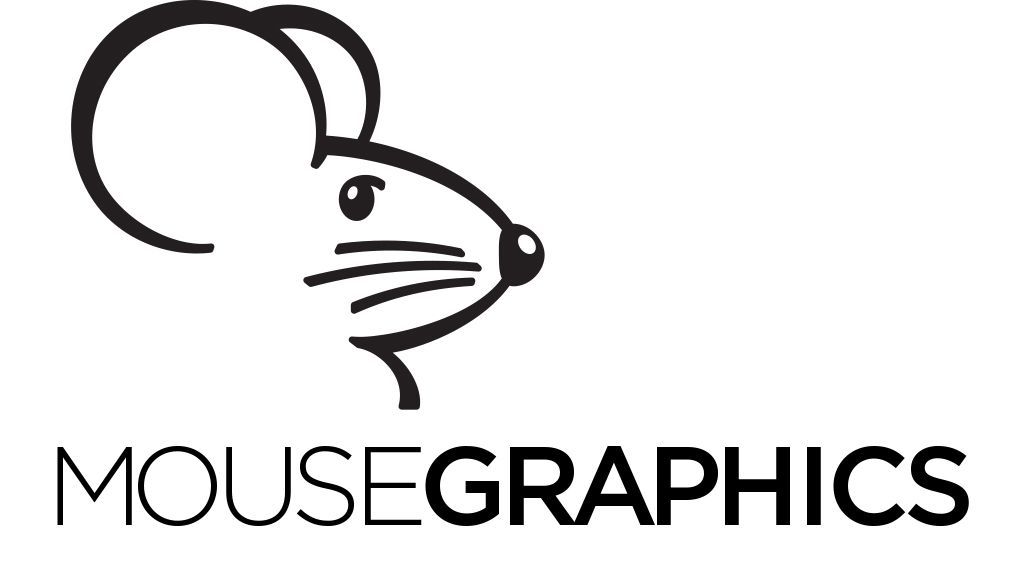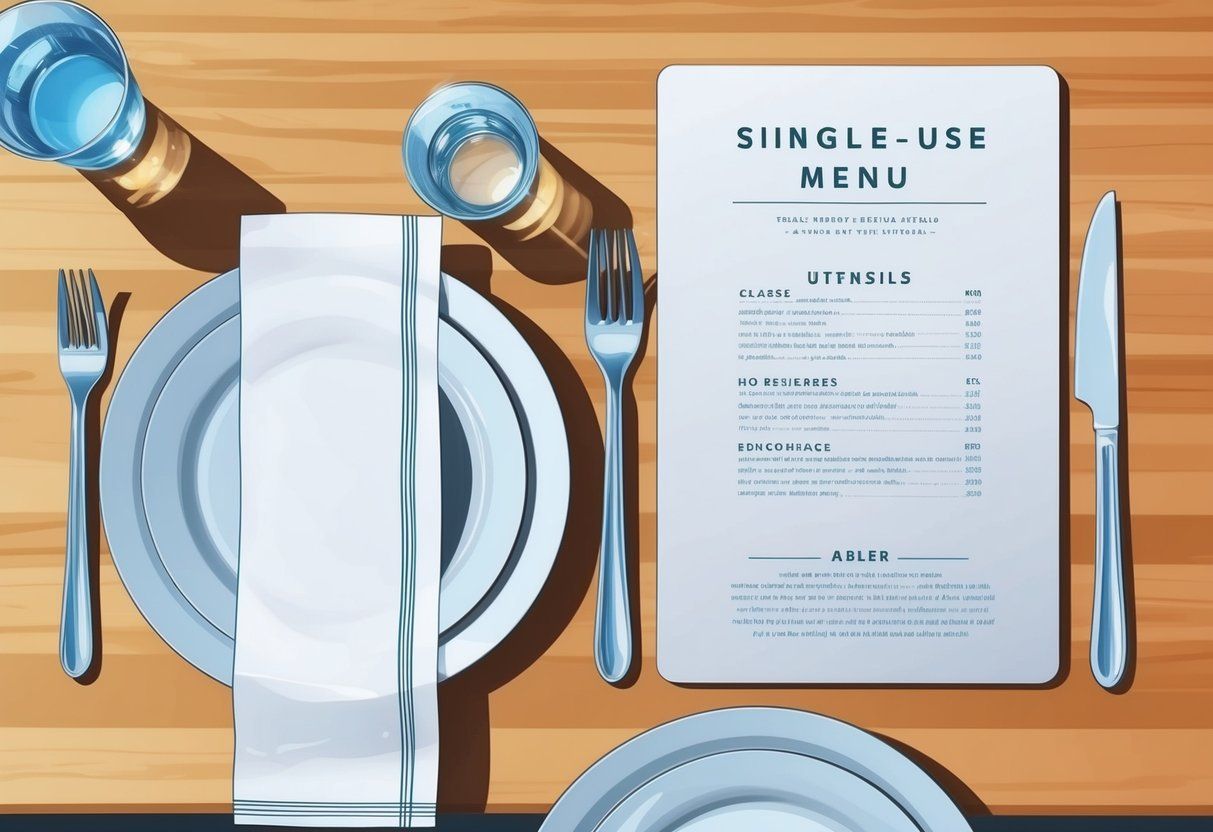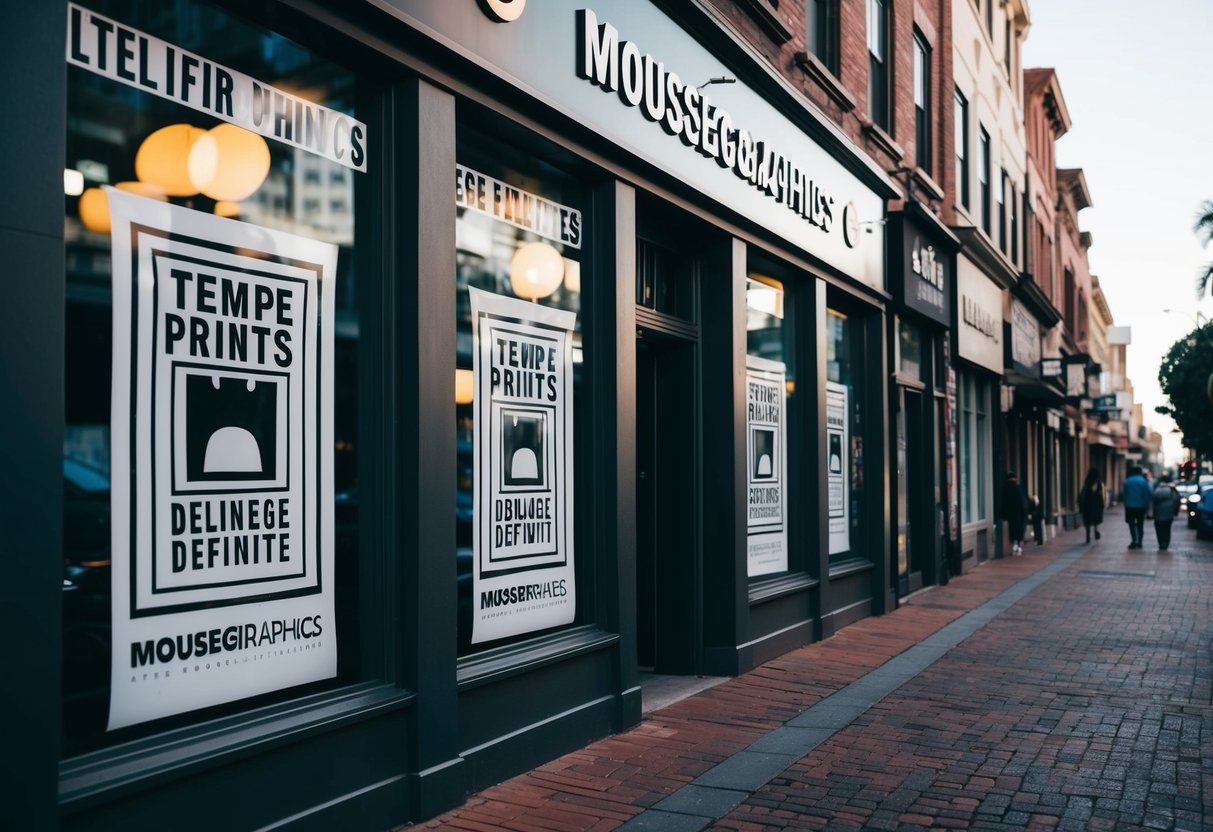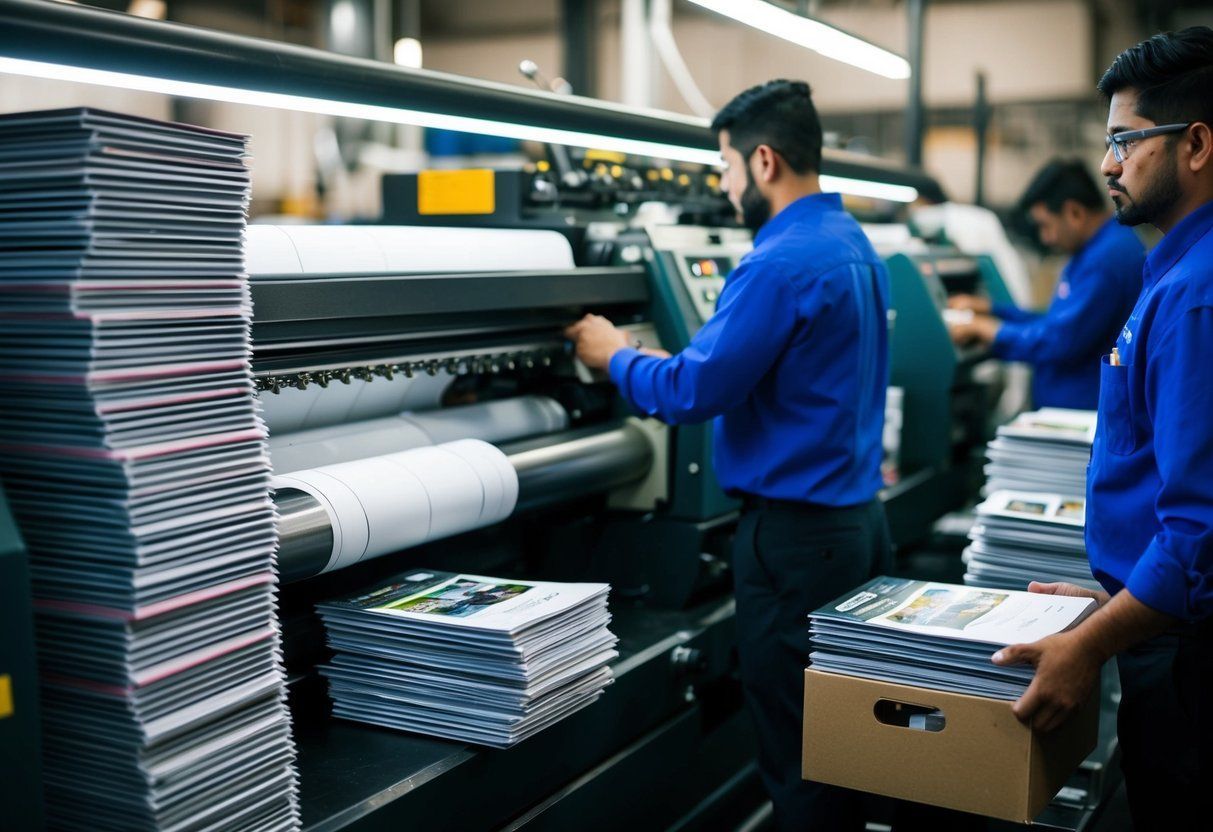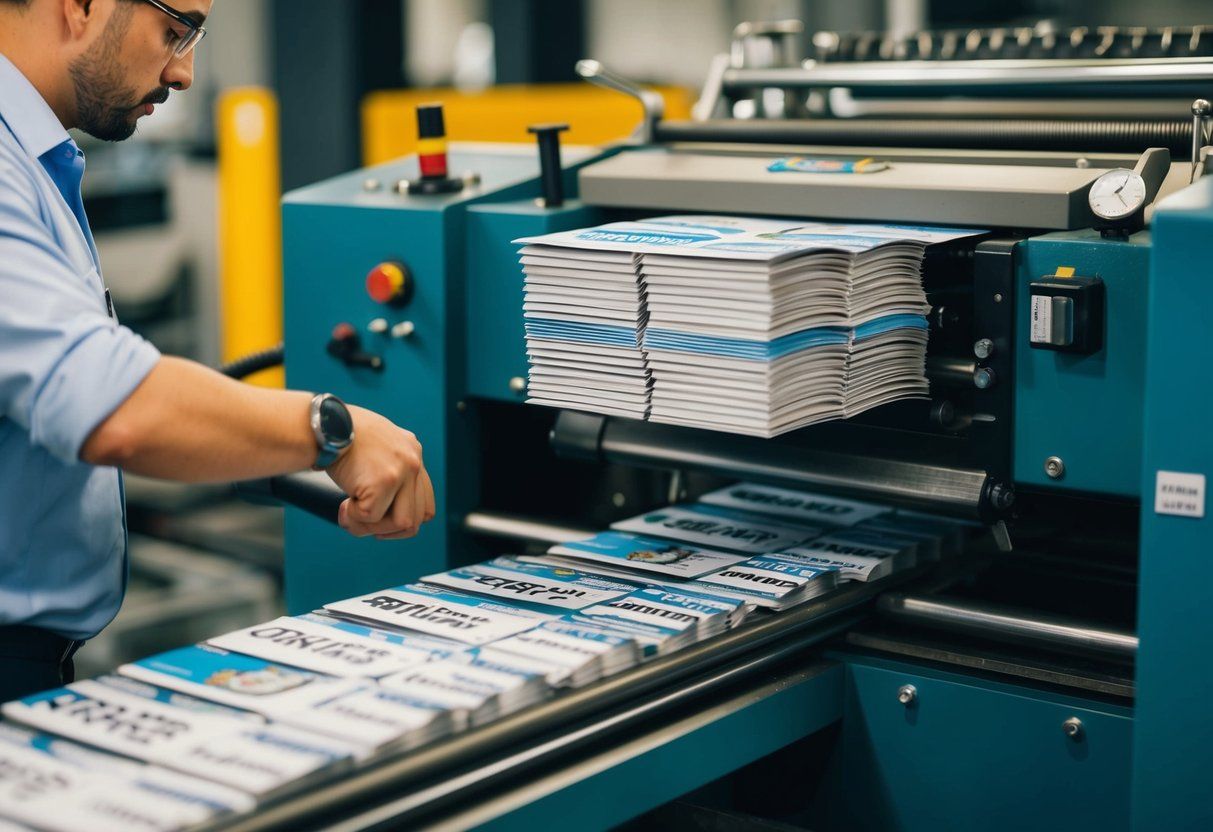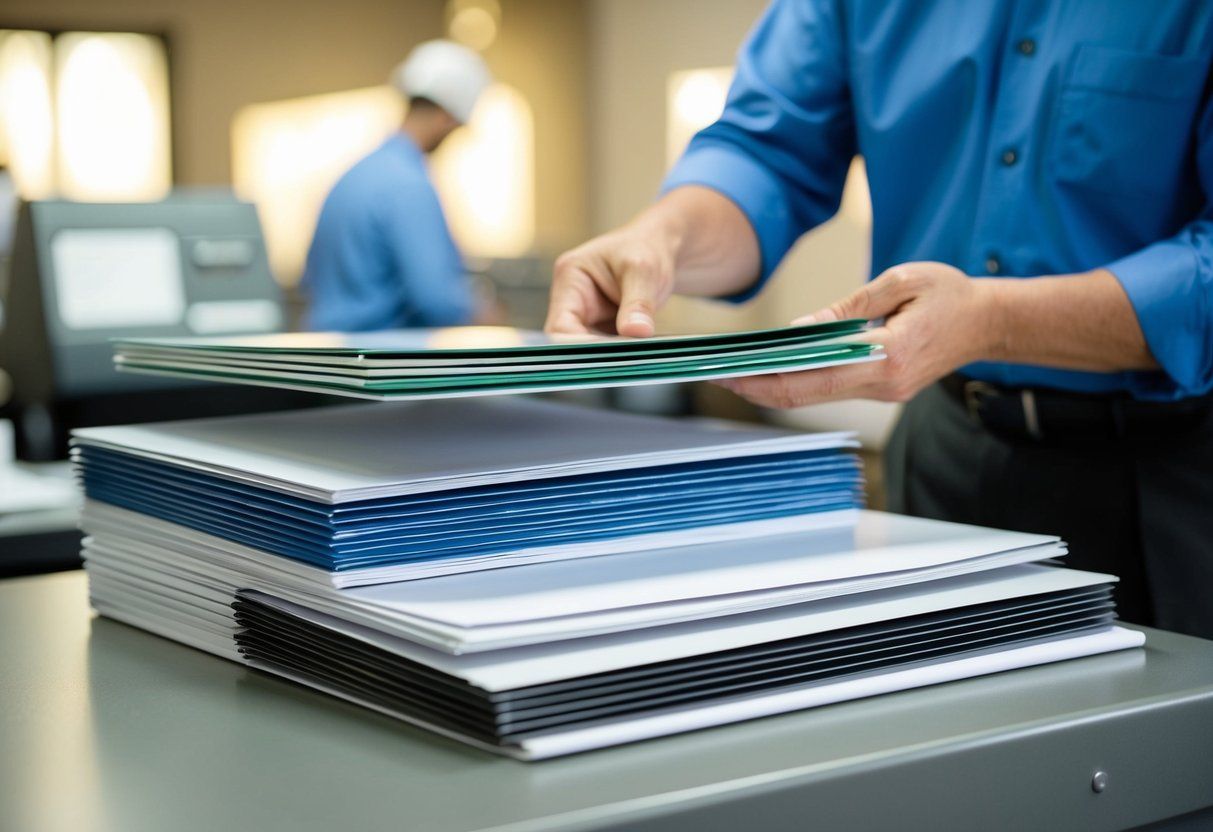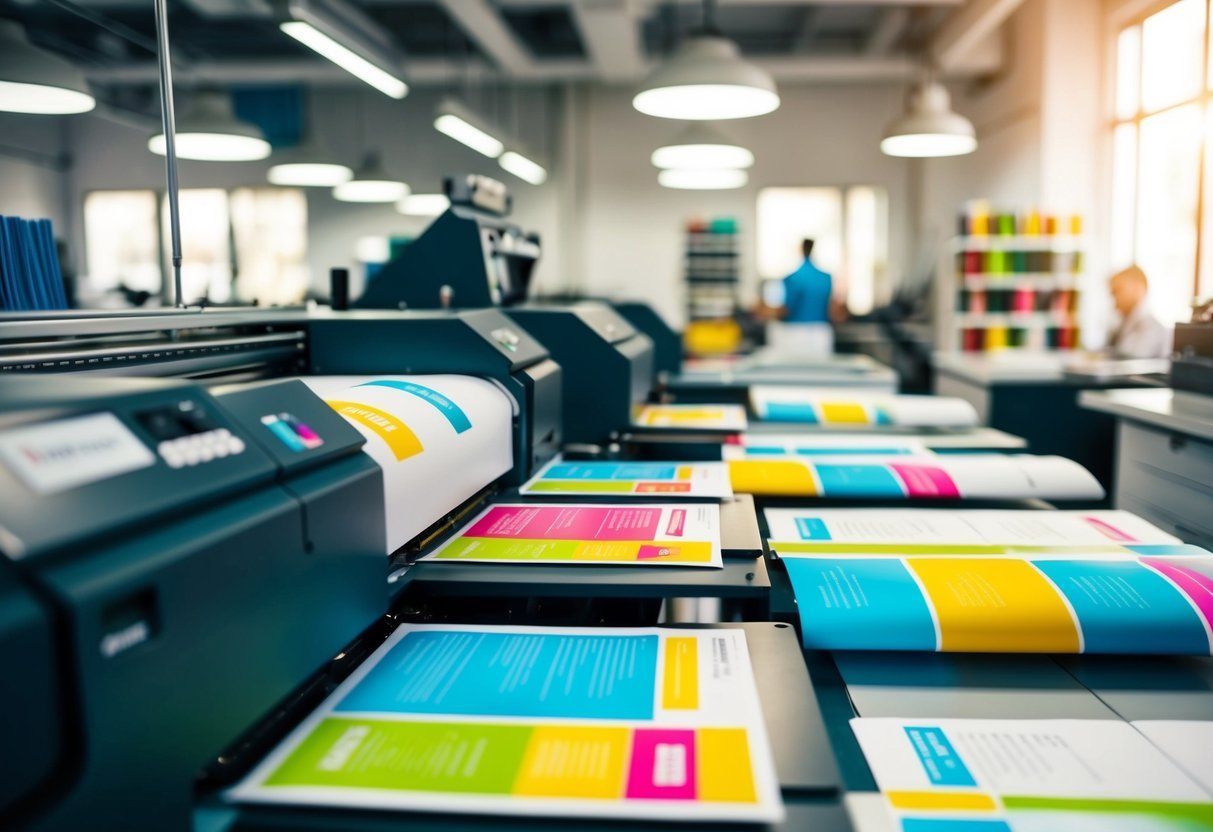The Importance of Waterproof Printing for Outdoor Signage in Tempe: Ensuring Durability and Visibility
Waterproof printing is essential for outdoor signage, especially in places like Tempe where the weather can be unpredictable. Using waterproof materials ensures that signs remain clear and vibrant, no matter how much rain or sun they face.
Signage that fades or becomes unreadable due to weather not only wastes resources but also fails to communicate important messages effectively.
Investing in high-quality waterproof printing technology makes a significant difference in the longevity and appearance of outdoor signs. These signs need to withstand various elements while maintaining their original design and information.
This resilience is key for businesses and organizations that rely on signage to attract attention and convey messages.
When selecting outdoor signage, durability should never be overlooked. Proper materials and printing techniques can enhance visibility and effectiveness, making them a smart choice for any outdoor setting.
Key Takeaways
- Waterproof printing keeps outdoor signage clear and vibrant.
- High-quality materials increase the lifespan of signs.
- Choosing the right printing technology is crucial for visibility.
Understanding Outdoor Signage
Outdoor signage plays a vital role in promoting businesses. It helps attract customers, convey important information, and enhances brand visibility. There are various types of outdoor signs, each designed for specific needs.
Types of Outdoor Signs
Businesses often use several types of outdoor signs to reach customers effectively. Common options include:
- Aluminum Signs : These are durable and resistant to rust. They work well in various weather conditions.
- Dibond Signs : Made of composite materials, Dibond signs are lightweight yet strong. They hold up against elements and fading.
- Coroplast Signs : This type is made from corrugated plastic, making it an affordable choice for temporary use. It is lightweight and easy to install.
Each sign has unique features that make it suitable for different applications. The choice depends on factors like location, budget, and the message that needs to be conveyed.
Benefits of Using Outdoor Signs for Businesses
Outdoor signs provide several advantages for businesses. They improve brand visibility, making it easier for potential customers to find them. Eye-catching signs can also create a positive first impression.
Using outdoor signage enhances the customer experience. It can guide customers, highlight promotions, or inform them about services offered. This information reduces confusion and encourages more foot traffic.
Moreover, effective outdoor signs can lead to increased sales. When people see a clear message or an attractive sign, they are more likely to stop and explore. This engagement is crucial for businesses looking to grow in competitive markets like Tempe.
The Durability of Signage Materials
Durability is key for outdoor signage, especially in areas like Tempe where weather conditions can vary. Choosing the right materials influences how well signs withstand rain, sun, and wind. The following subsections will explore the weather resistance of various materials and how they affect longevity and maintenance.
Comparing Weather Resistance of Various Materials
Different materials have unique levels of weather resistance. For example, aluminum composite signs are strong and resistant to rust, making them ideal for various climates.
Dibond is another option known for its durability against harsh weather, providing excellent protection against fading due to UV exposure.
Coroplast, a lightweight option, offers decent weather resistance but may not last as long as heavier materials. PVC board is similar; while it can hold up well, prolonged exposure to extreme conditions can cause warping.
Crezone is made from a sturdy, weather-resistant material that can handle outdoor elements quite well, ensuring longer-lasting signage.
Longevity and Maintenance of Outdoor Signs
Longevity of outdoor signs also depends on their materials. Aluminum composite and Dibond generally require less maintenance and can last 5 to 10 years without significant wear.
Coroplast signs may last shorter, typically 2 to 4 years, due to their lighter design.
Regular maintenance, such as cleaning, helps extend the life of all signage types. Using mild soap and water avoids damaging surfaces. Signs made from PVC may need periodic checks for warping and fading.
Crezone signs, being more durable, usually need minimal upkeep. Choosing the right material is essential for ensuring that outdoor signage remains vibrant and effective for years.
Waterproof Printing Technologies
Waterproof printing technologies play a vital role in ensuring outdoor signage remains effective in various weather conditions. Understanding the inks, coatings, and recent advancements can help businesses and organizations choose the right methods for their needs.
Inks and Coatings for Waterproofing
Waterproof inks are specially formulated to resist water damage. These inks often use pigments that are resistant to fading and smudging. They help maintain clarity and color vibrancy, even in heavy rain.
Coatings also play a crucial role. They can be applied over printed materials to provide an extra layer of protection.
Popular types of coatings include:
- Aqueous Coatings : These are water-based and dry quickly, providing a subtle finish.
- UV Coatings : These use ultraviolet light to dry quickly and offer strong resistance to moisture.
- Lamination : This involves applying a clear plastic film, which protects against water and UV rays.
Each option has its benefits, and the choice depends on the specific requirements of the signage.
Advancements in Waterproof Printing
Recent advancements in waterproof printing have improved the quality and durability of outdoor signage. New technology allows for better ink adhesion, reducing the risk of peeling and fading over time.
Innovative printing methods such as dye-sublimation and eco-solvent printing are also gaining popularity.
Dye-sublimation uses heat to transfer dye onto materials, creating lasting prints suitable for outdoor use. Eco-solvent printing is more environmentally friendly and offers excellent resistance to water and UV exposure.
Businesses in Tempe should keep these advancements in mind when selecting waterproof printing solutions. By choosing high-quality materials and modern techniques, they can ensure their outdoor signage remains effective and appealing.
Design Considerations for Outdoor Signage
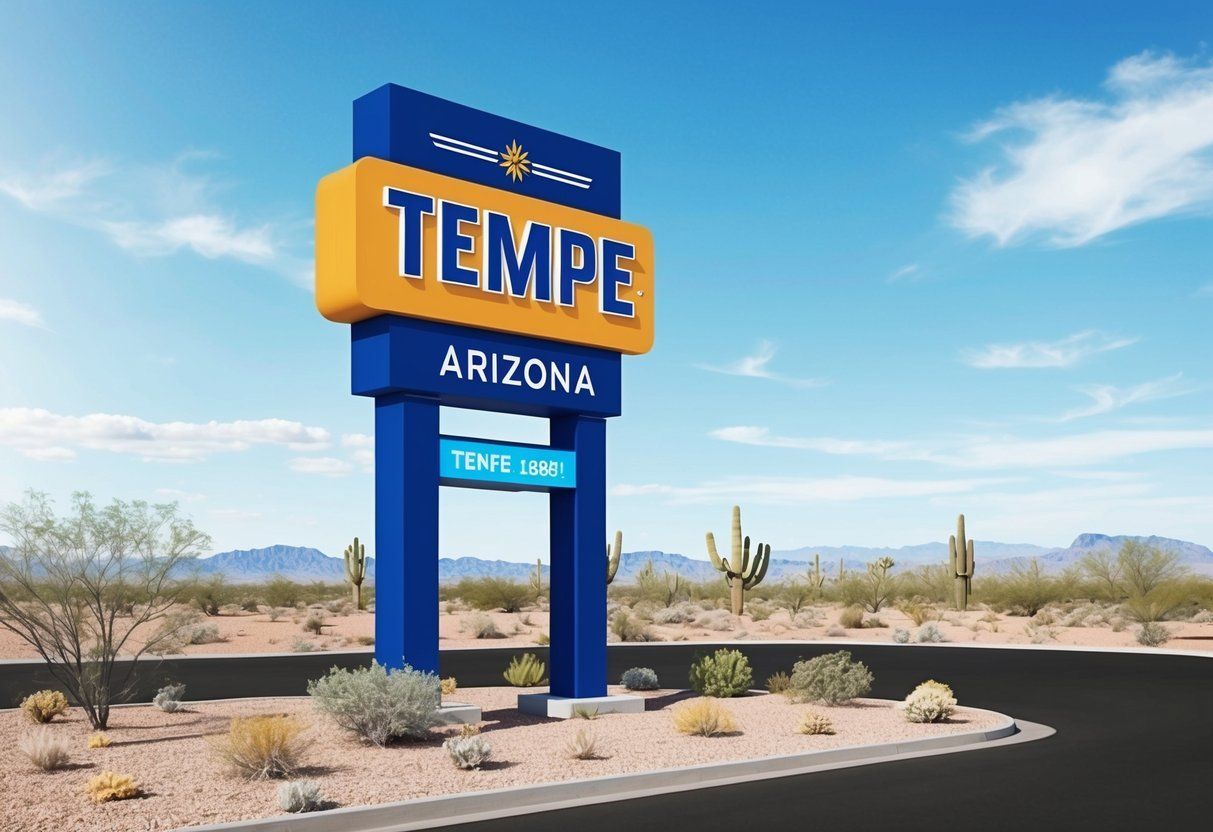
When designing outdoor signage, careful attention to visual appeal and brand representation is essential. Clear visibility and effective branding ensure that messages reach the intended audience.
Visual Impact and Readability
Outdoor displays must be designed for visibility. This means using bold colors that stand out against the surroundings. High contrast between text and background helps improve readability.
Font Choice: Simple, large fonts are key. Avoid overly fancy scripts that can be hard to read from a distance.
Placement Matters: Signage should be positioned for maximum sightlines. It should be hung at eye level where possible.
Material Selection: Acrylic signs provide durability and a clean look. Choosing water-resistant materials ensures longevity in various weather conditions.
Customization and Brand Alignment
Customization is crucial for effective outdoor signage. Signage should reflect a brand’s unique identity.
Color Schemes: Use colors that align with the brand. This helps create a cohesive look across all marketing efforts.
Shapes and Sizes: Custom shapes can draw attention. Non-traditional designs may attract more eyes than standard rectangular signs.
Logo Integration: Including a logo prominently reinforces brand recognition. The overall design should reflect the brand’s personality and values, aiding customer connection.
Materials and Construction of Outdoor Signs
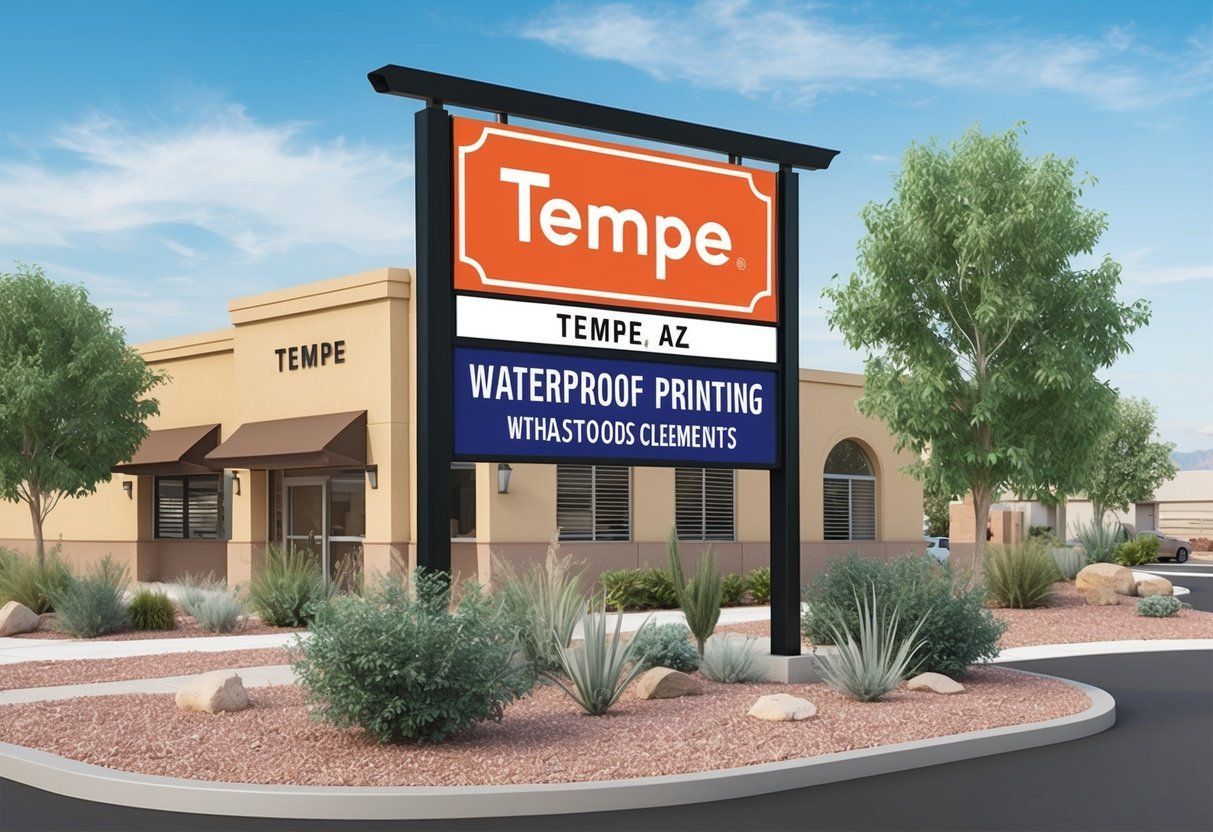
Choosing the right materials for outdoor signs is crucial for durability and effectiveness. This section discusses key materials like aluminum and aluminum composite, as well as innovative options such as Coroplast and Bubbl-X.
Aluminum and Aluminum Composite Materials
Aluminum is a popular choice for outdoor signage due to its strength and resistance to weather. It does not rust and can withstand harsh conditions, making it ideal for places like Tempe.
Aluminum composite materials, like Dibond, consist of two thin layers of aluminum surrounding a non-aluminum core. This construction provides extra durability while keeping the sign lightweight. The smooth surface of these materials allows for high-quality printing, ensuring that colors remain vibrant even in outdoor settings.
Innovative Materials: Coroplast and Bubbl-X
Coroplast is a corrugated plastic material known for its versatility and affordability. It is lightweight and easily cut to shape, making it ideal for temporary signs or event signage. Coroplast can also resist water and UV damage, which is essential for outdoor use.
Bubbl-X is another innovative material, featuring a unique bubble structure that adds strength while remaining lightweight. This material is waterproof and can survive different weather conditions. Bubbl-X also offers excellent print quality, leading to clear and attractive signage that captures attention.
Installation and Placement Strategy
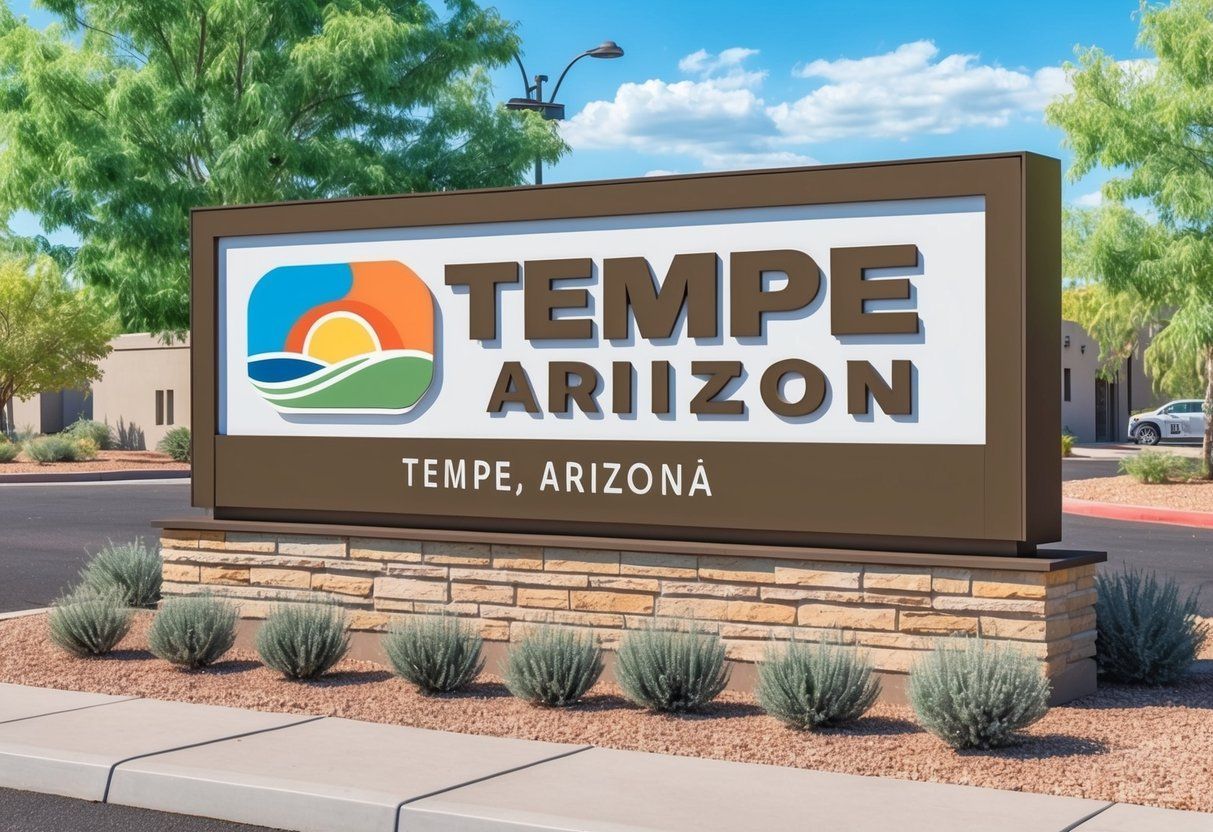
Careful planning is essential for the successful installation of outdoor signage. This includes preparing the site properly and positioning signs for maximum effectiveness.
Site Preparation and Signage Installation
Before installing any signage, the site must be prepared. This involves clearing the area where the sign will be placed. Remove any debris, plants, or obstacles that could block visibility.
Choose a solid base for the sign, such as concrete or sturdy wood. This will ensure stability, especially in windy conditions. Inspect the ground to ensure it can support the sign.
For event signage, consider temporary setups that can be easily moved. For real estate signs, placing them close to the property will attract attention. Following local regulations for signage placements is also important to avoid fines or issues.
Positioning for Maximum Visibility and Impact
Positioning outdoor signs correctly can greatly enhance their visibility and effectiveness. Signs should be placed at eye level to ensure they are easy to read.
Consider local traffic patterns. Placing signs where they will be seen by people driving or walking can increase engagement. For construction site signs, ensure they are visible from multiple angles, as safety is a priority.
Use bright colors and clear fonts to enhance readability from a distance. Remember to keep surrounding areas free of distractions. This approach maximizes the sign’s impact, whether it’s for an event, real estate, or a construction site.
Types of Outdoor Signage Solutions
Outdoor signage solutions come in various forms to meet different needs. Each type offers unique advantages, making it important to choose the right option for specific situations.
Banners and Flags for Versatility
Banners and flags are popular choices for outdoor promotions. They can be made from durable vinyl, which resists fading and tearing. This makes them ideal for long-term use in various weather conditions.
Vinyl banners are lightweight and easy to install. They can be hung from poles, fences, or buildings. Flags are similar but typically used for more temporary displays. They can flutter in the wind, attracting attention.
Businesses often use banners for events or announcements. Some examples include grand openings, sales, or festivals. Due to their versatility, these signs can effectively communicate messages in busy outdoor environments.
Rigid Signs for Durability
Rigid signs provide a strong and lasting option for outdoor signage. Materials such as aluminum, PVC, and corrugated plastic are common choices. These materials can withstand harsh weather, making them suitable for permanent placements.
A-frames are a type of rigid sign that can be easily moved. They are often used in front of businesses to attract foot traffic. These signs can display details like menus, sales, or special events.
Billboard advertisements fall into this category as well. They are large and designed for high visibility. Their sturdiness ensures they remain effective over time, even in outdoor settings.
Temporary and Event-Specific Signage
Temporary signage focuses on short-term needs. Event signage is an excellent example, guiding attendees at festivals, fairs, or conferences. These signs are often lightweight and can be made from corrugated cardboard or vinyl.
Event-specific signage can include directional signs, informational displays, or promotional banners. They help ensure visitors find their way and understand what’s happening.
Flexibility in design allows businesses to quickly produce and change these signs as needed. This makes them ideal for marketing campaigns or special events that require quick turnaround times.
Maintenance and Upkeep
Proper maintenance ensures that waterproof outdoor signage remains effective and visually appealing.
Regular care helps extend the lifespan of high-quality signs, making them a valuable investment.
Routine Cleaning and Damage Prevention
Routine cleaning is essential for keeping outdoor signage in great condition.
Signs should be cleaned every few months to remove dirt and grime.
Using a soft cloth with mild soap and water can help maintain the sign’s appearance without causing damage.
Preventing damage is also crucial.
Inspect signs regularly for scratches, peeling, or fading.
Touch up any affected areas immediately to stop further issues.
This can maintain the sign’s visibility and durability.
Using protective coatings can offer added defense against harsh weather.
This prevents colors from fading and keeps the sign looking fresh.
Incorporating these preventative steps will ensure outdoor signage remains functional and attractive.
Updating Signage Information and Imaging
Signs may need updates due to changes in information or branding.
Regularly reviewing content helps ensure it remains current and relevant.
This is particularly important for businesses that want to attract new customers.
If new images or logos are introduced, updating the signage is key.
A fresh design can draw attention and reinforce a brand’s identity.
To update signage, professionals should use high-quality materials to match the original sign.
This consistency helps maintain a polished look, which is important for public perception.
Investing in these updates will reflect positively on the brand while keeping messages clear and engaging.
Frequently Asked Questions
Understanding waterproof printing and its role in outdoor signage helps address common concerns. The following questions focus on the durability, materials, and maintenance of waterproof signs in various conditions.
How can waterproofing enhance the longevity of outdoor signs?
Waterproofing protects outdoor signs from rain, snow, and moisture.
It prevents damage like warping and peeling, which can shorten the sign’s lifespan.
Signs with waterproof coatings can last significantly longer than those without.
What materials are best for weather-resistant outdoor signage?
Ideal materials include vinyl, aluminum, and acrylic.
These options resist moisture and UV rays well. They are durable and maintain their appearance even in harsh weather.
What techniques are used to prevent outdoor signs from fading?
To prevent fading, printers use UV-resistant inks and protective laminates.
These techniques block harmful rays that can discolor graphics. Proper finishes also help maintain vibrant colors.
How do weather conditions affect the choice of printing material for outdoor signs?
Different weather conditions can dictate which materials are chosen.
For example, areas with high humidity benefit from materials that resist moisture.
Conversely, extreme heat may require more heat-resistant options.
What maintenance is required to preserve the quality of waterproof outdoor signage?
Regular cleaning is important to remove dirt, dust, and grime.
Using gentle cleaners can help avoid damaging the surface.
Periodic inspections for wear and tear can also maintain the sign’s quality.
What are the benefits of using waterproof signs for businesses in high-humidity areas?
Waterproof signs reduce the risk of water damage, ensuring clear messaging. They continue to look professional, enhancing a business’s image. Such signs also lower replacement costs due to their increased durability.…

Yard Sign Printing from Us at Mousegraphics in Tempe: Your Go-To Solution for Quality Custom Signage
Ready to get started?
All Rights Reserved | Mousegraphics
